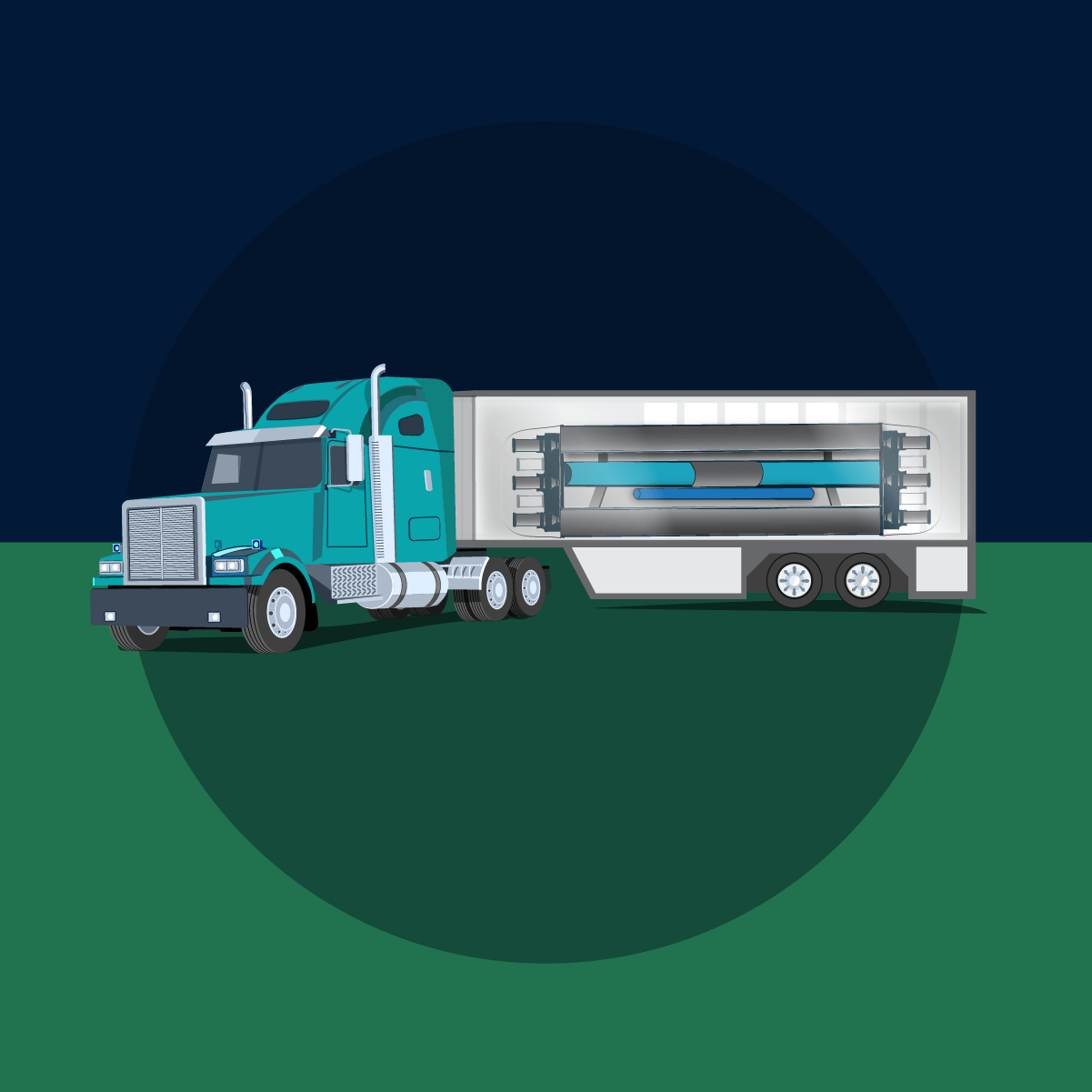Microreactors are not defined by their fuel form or coolant. Instead, they have three main features.
February 26, 2021Nuclear is getting smaller … and it’s opening up some big opportunities for the industry.
A handful of microreactor designs are under development in the United States, and they could be ready to roll out within the next decade.
These compact reactors will be small enough to transport by truck and could help solve energy challenges in a number of areas, ranging from remote commercial or residential locations to military bases.
Features
Microreactors are not defined by their fuel form or coolant. Instead, they have three main features:
- Factory fabricated: All components of a microreactor would be fully assembled in a factory and shipped out to location. This eliminates difficulties associated with large-scale construction, reduces capital costs and would help get the reactor up and running quickly.
- Transportable: Smaller unit designs will make microreactors very transportable. This would make it easy for vendors to ship the entire reactor by truck, shipping vessel, airplane or railcar.
- Self-adjusting: Simple and responsive design concepts will allow microreactors to self-adjust. They won’t require a large number of specialized operators and would utilize passive safety systems that prevent any potential for overheating or reactor meltdown.

Infographic
Benefits
Microreactor designs vary, but most would be able to produce 1-20 megawatts of thermal energy that could be used directly as heat or converted to electric power. They can be used to generate clean and reliable electricity for commercial use or for non-electric applications such as district heating, water desalination and hydrogen fuel production.
Other benefits:
- Seamless integration with renewables within microgrids
- Can be used for emergency response to help restore power to areas hit by natural disasters
- A longer core life, operating for up to 10 years without refueling
- Can be quickly removed from sites and exchanged for new ones
Most designs will require fuel with a higher concentration of uranium-235 that’s not currently used in today’s reactors, although some may benefit from use of high temperature moderating materials that would reduce fuel enrichment requirements while maintaining the small system size.
The U.S. Department of Energy supports a variety of advanced reactor designs, including gas, liquid metal, molten salt and heat pipe-cooled concepts. American microreactor developers are currently focused on gas and heat pipe-cooled designs that could debut as early as the mid-2020s.

